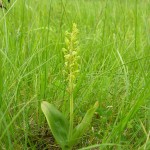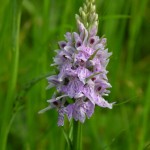
The year 2010 is the third in which RDNHS members have led parties of visitors to Basildon Park on nature walks around the grounds. Initially walks were held on the last Friday of each month but National Trust saw these as so successful that they requested a walk on each Friday, which is what occurs this year, led by one of a team of RDNHS members, experts in their subjects. The walks take place each Friday from February to November starting at 14.00 in the stable yard.
Basildon Park has an elevated position above the west bank of the Thames, 2½ miles from Pangbourne off the A329. There are some 400 acres of parkland with varied habitats from species-poor grassland, species-rich chalk grassland, some areas of relatively acid scrubland and extensive woodland. The “standard” walk is about 3 miles and goes through all of these habitats. In spring there are very fine areas of bluebells and other woodland flowers: in summer the chalk grassland in the “Hidden Valley” provides a fine display of flowers and butterflies. This year four species of orchid, common spotted, twayblade, pyramidal and bee have been found there and enthusiasts for the unusual have been delighted by the quantities of adder’s tongue ferns.
The woodland has a rich population of raspberries and blackberries. In autumn, depending on the season, there are some good displays of fungi including wax caps in the grassland and oyster mushrooms, King Alfred’s cakes and porcelain mushrooms on rotting wood. The park is not a strikingly good area for birds but has roe deer and muntjac, a large population of badgers and some rabbits. Squirrels are not welcomed as the woodland is managed as a commercial exercise and new saplings are planted from time to time.
The numbers of visitors joining the walks has proved to be unpredictable, from 2 to 23, some of the largest numbers coming in February and November. Occasionally we have visitors from overseas: discussion of nomenclature in those circumstances can be entertaining, for instance what we call “sycamore” is very different from “sycamore” in the USA. All the leaders thoroughly enjoy their task: it is a delight to see the changes that occur from month to month and from year to year.
A spin off of these walks has been the development of a programme of outdoor events for families at Basildon Park, supported by a grant from Open Air Laboratory (OPAL). This provides funding to bring nature to a wider public by providing equipment such as binoculars, hand lenses, a clinometer (to measure the heights of trees) and field study identification guides.
Chris Bucke July 12th 2010.

